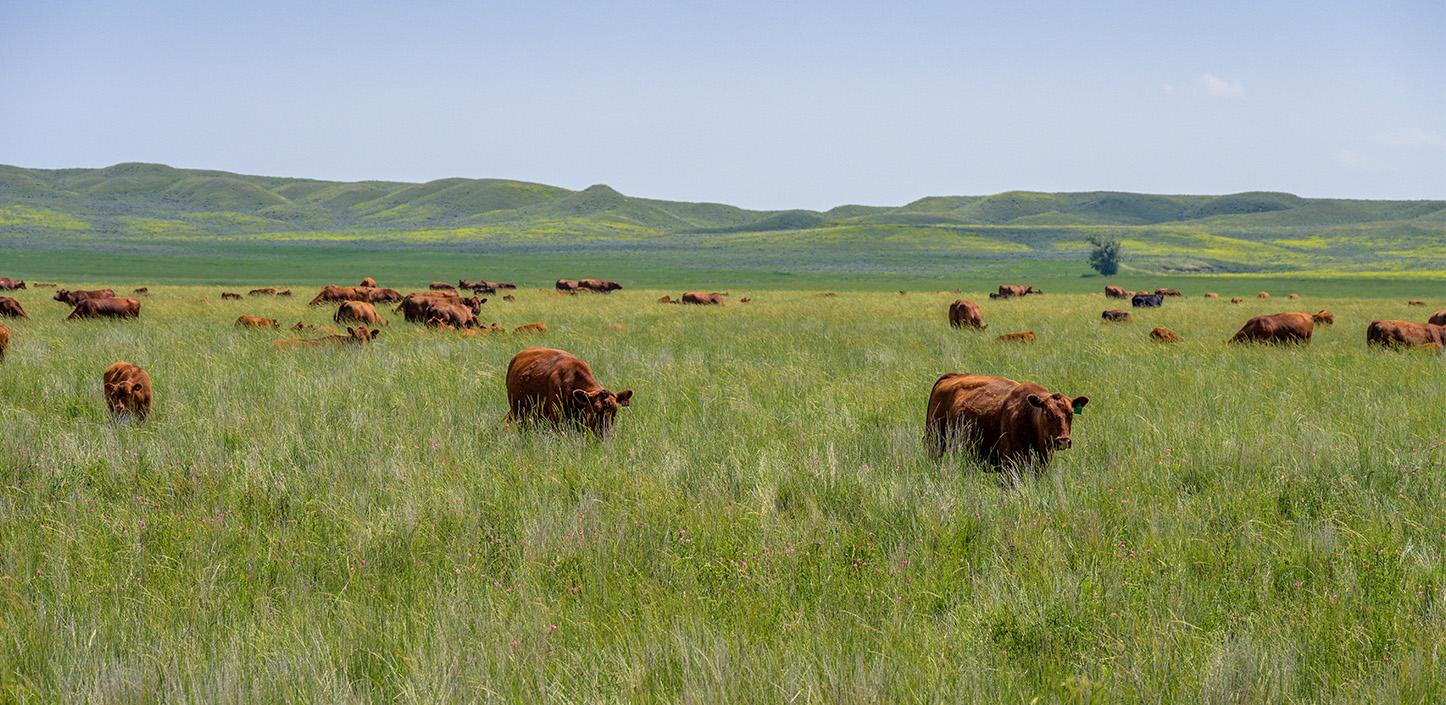
Grassland Resilience and Conservation Initiative
In partnership with McDonald’s USA, some of its key beef and beverage suppliers and the U.S. Department of Agriculture’s Natural Resources Conservation Service (NRCS), the National Fish and Wildlife Foundation (NFWF) has launched a landmark conservation initiative to support large-scale, voluntary conservation and grazing management practices on grasslands across the United States.
Partners
Launched in 2025, the Grassland Resilience and Conservation Initiative aims to enhance wildlife habitat, conserve water resources and improve soil health. McDonald’s USA supports the initiative as part of its aims to help strengthen the resilience of its U.S. beef supply chain, including economic benefits participating ranchers are expected to receive via incentive payments.
This initiative seeks to improve the health and resilience of 4 million acres of grasslands over seven years, with significant investments expected in the Great Plains, Rocky Mountain West, Midwest, West Coast and Southeast.
As part of this initiative, NFWF will manage and invest conservation funding to advance ranchers in their voluntary conservation efforts. NFWF has already begun collaborating with its conservation partners across America’s grasslands to identify impactful landscape-scale projects that will generate the greatest possible benefits to both wildlife populations and the productivity of vital U.S. ranch lands.
On behalf of McDonald’s USA, Kateri and Carbon Yield will provide independent monitoring and quantification of any improvements to soil health.
Key strategies include:
- Grazing Management: Develop and implement grazing management plans that optimize stocking rates and livestock movements and incorporate virtual fencing and other grazing infrastructure, as appropriate, to promote plant growth above and below ground, improve wildlife habitat, and maximize soil function.
- Grassland Restoration: Restore grassland function and connectivity through reseeding native plants, controlling invasive vegetation in areas with new and low-density infestations of woody invasive species, and through removing and modifying fencing to facilitate wildlife migrations.
- Protection and Restoration of Water Resources and Wildlife Habitat: Restore riparian buffers and wet meadows (e.g., via streambank re-vegetation, water control structures, beaver mimicry) to improve hydrology, in-stream flows, aquifer recharge, water conservation, and flood and drought resilience. Implement voluntary, permanent conservation efforts that maintain working ranches and restrict sub-division and sod-busting activities (e.g., conservation easements, grass banking). Projects in areas at high risk of tillage, development or degradation will be more competitive.
| Program Fact Sheet | Download the PDF | |
| Rancher FAQ | Download the PDF |
Director, Central Regional Office
Manager, Central Region Working Lands







